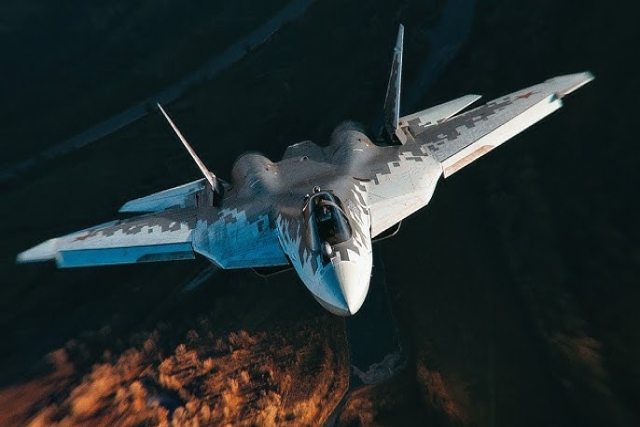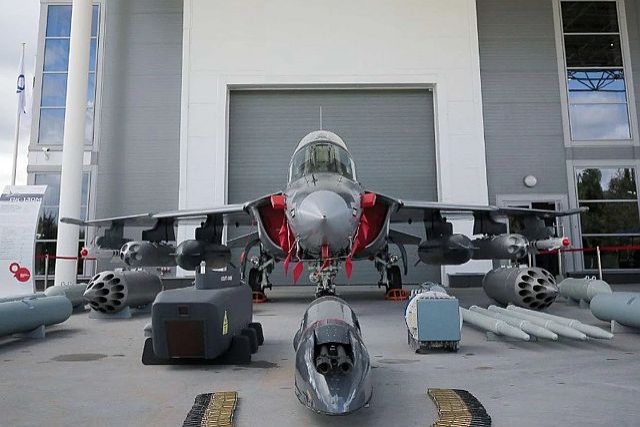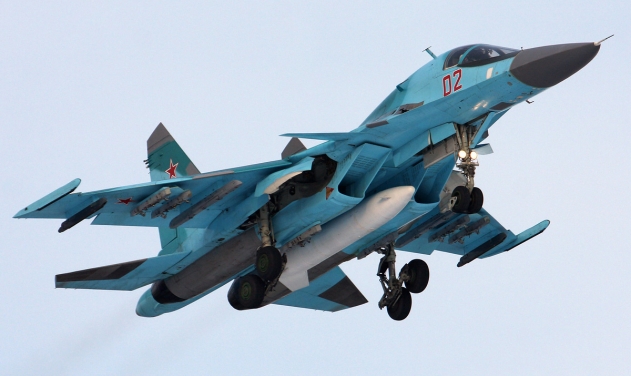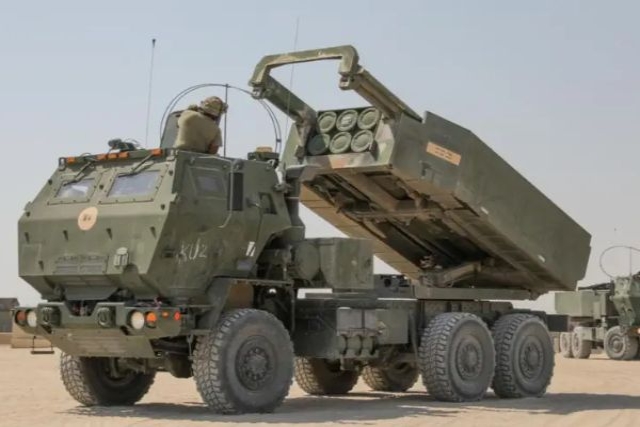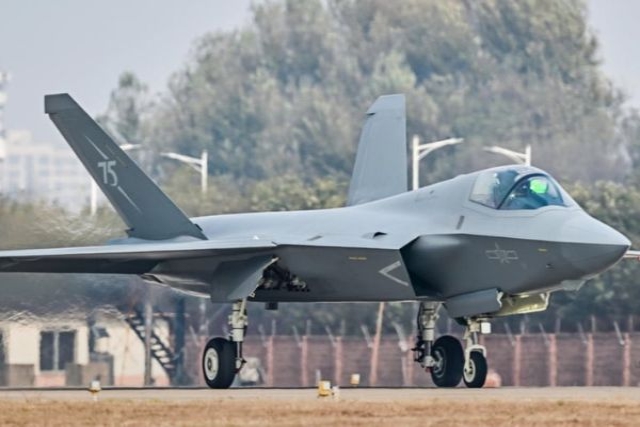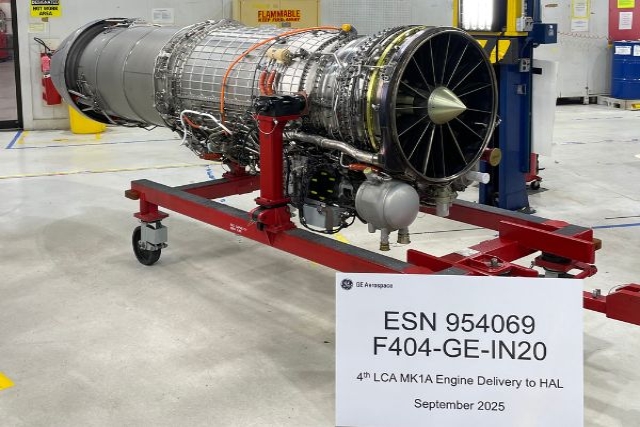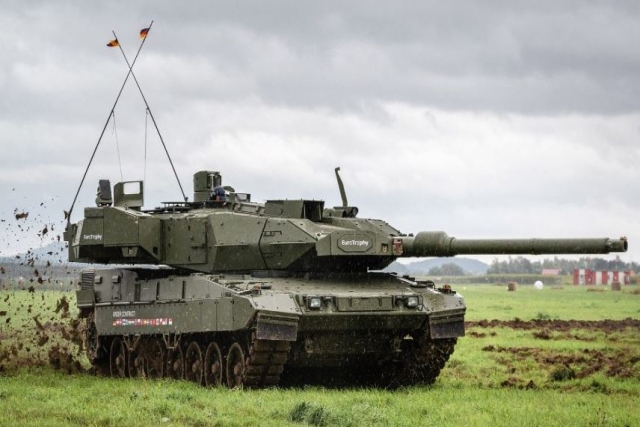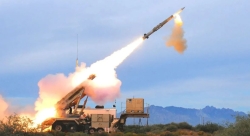Satellite Spots Russian Su-35 Jets in Algerian Colours
Deliveries to Algeria are said to have started earlier this month with the aircraft being part of 24 Su-35s from the aborted deal with Egypt
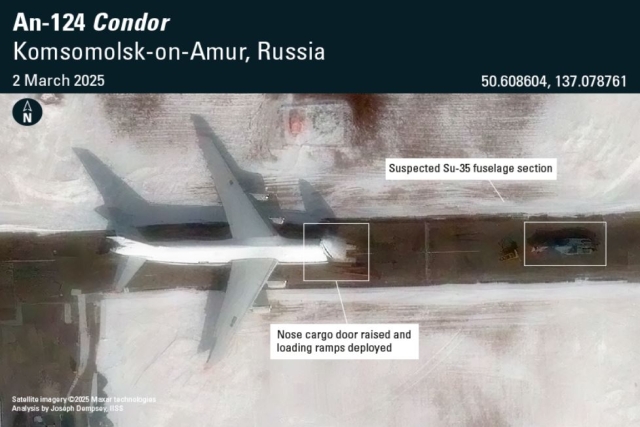
A Russian-built Su-35 fighter jet, originally painted in Egyptian camouflage, has been spotted at an Algerian airbase with new Algerian Air Force markings, raising fresh questions about a quiet arms transfer caught by satellite.
An Algerian source told Defense Mirror that the deal to buy Su-35 aircraft was finalized two years ago and has only now come to light due to satellite imagery.
Images from Maxar Technologies, dated March 2, 2025, show at least one Su-35 being loaded onto a Russian An-124-100 transport aircraft at the Komsomolsk-on-Amur aircraft plant in Russia’s Far East. The aircraft carried an Egyptian-style camouflage, but its wingtips were removed, consistent with standard transport preparations.
On March 5, what appears to be the same Su-35 was recorded at Ain Beida Airbase in Algeria. By March 10, new satellite imagery captured the same jet now featuring Algerian Air Force markings — blending Egyptian camouflage with its new operator’s insignia.
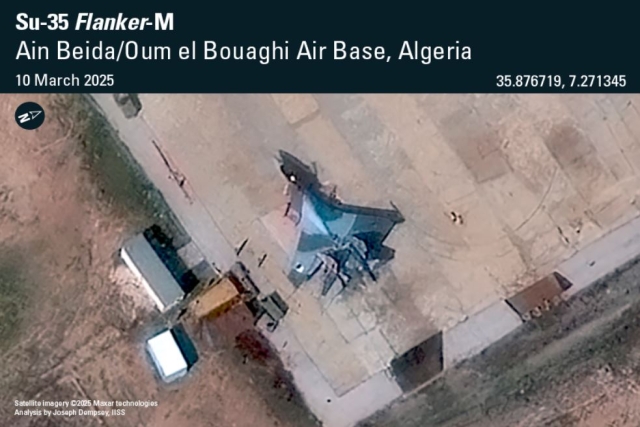
Egypt cancelled its order for Su-35s in 2018 due to U.S. sanctions threats under the Countering America’s Adversaries Through Sanctions Act (CAATSA).
By early April 2025, at least four additional Su-35 jets bearing Algerian markings were spotted at the Komsomolsk-on-Amur plant, suggesting they are being prepared for delivery.
Defense analysts from the Military Balance blog, run by the International Institute for Strategic Studies (IISS), confirm that these deliveries represent Algeria’s growing acquisition of Russian aircraft.
Algeria already operates Su-30MKA fighters and in February 2025 signed a contract for Su-57E fifth-generation fighters, although delivery timelines remain uncertain.
“Algeria will be the first African country to field a full lineup of Russian-made air superiority fighters — Su-30s, Su-35s, and Su-57s,” noted IISS in its latest assessment.
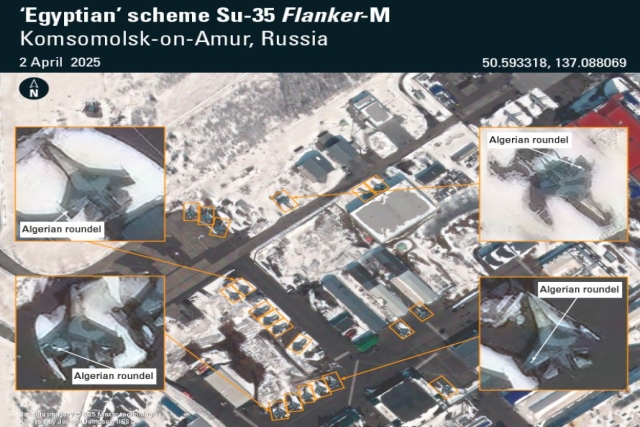
However, the IISS also highlights a production bottleneck in Russia’s Su-57 program. As of early 2025, the Russian Aerospace Forces operate only 19 Su-57s, with just seven produced between 2023 and 2024. Despite plans to ramp up production to 16 aircraft annually, this raises questions over the immediate availability of Su-57s for export customers like Algeria.
Meanwhile, reports from late 2024 indicated that some of the undelivered Egyptian Su-35s may also have been transferred to Iran, suggesting multiple diversions from the original export plan.
Although neither Algeria nor Russia has officially confirmed the Su-35 transfer, the satellite evidence points to a quiet but significant shift in regional airpower dynamics — with Algeria becoming only the fourth operator of the Su-35 after Russia, China, and Iran.

